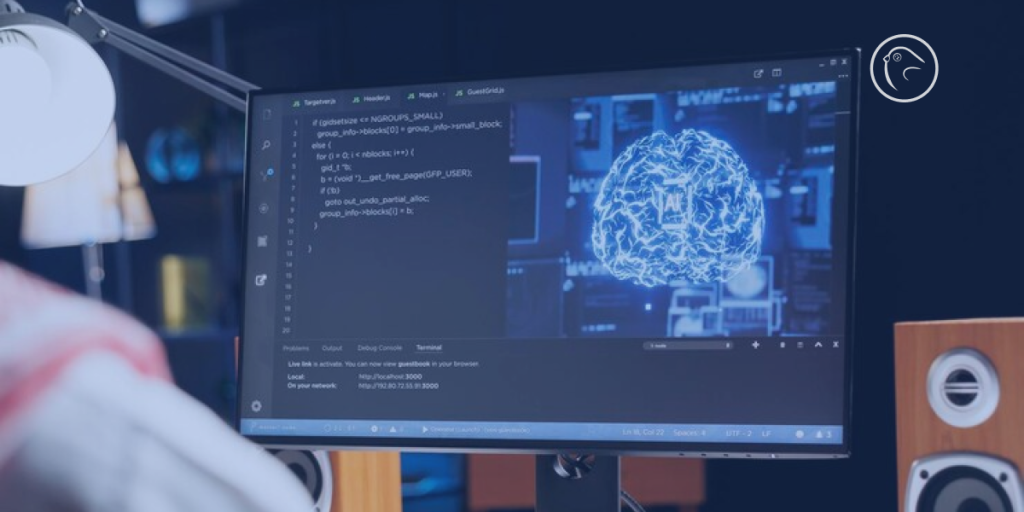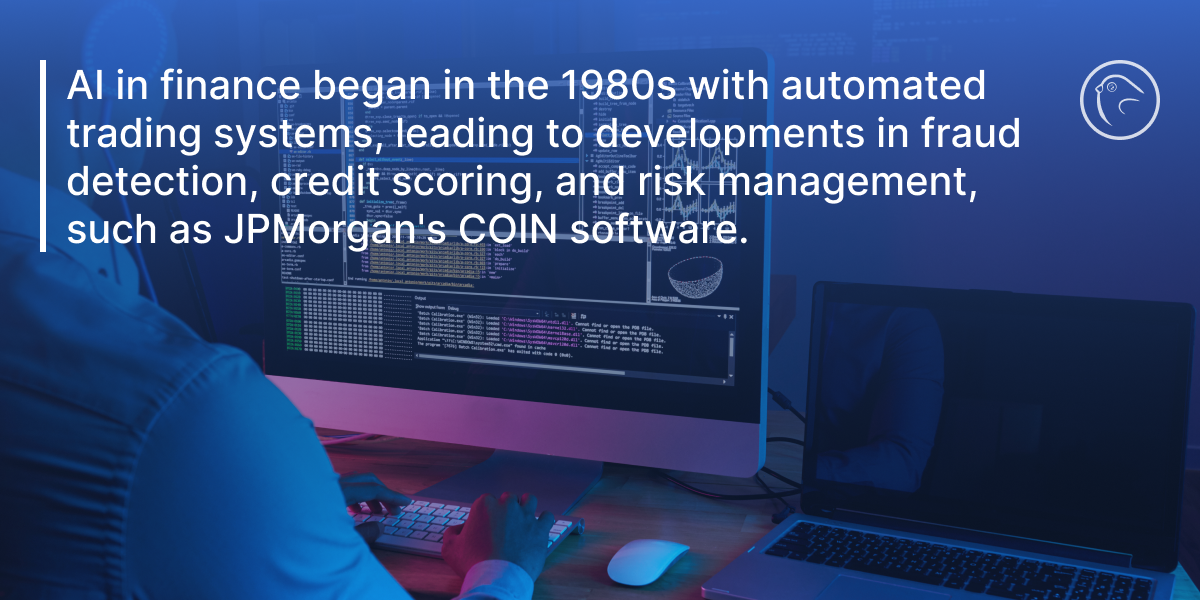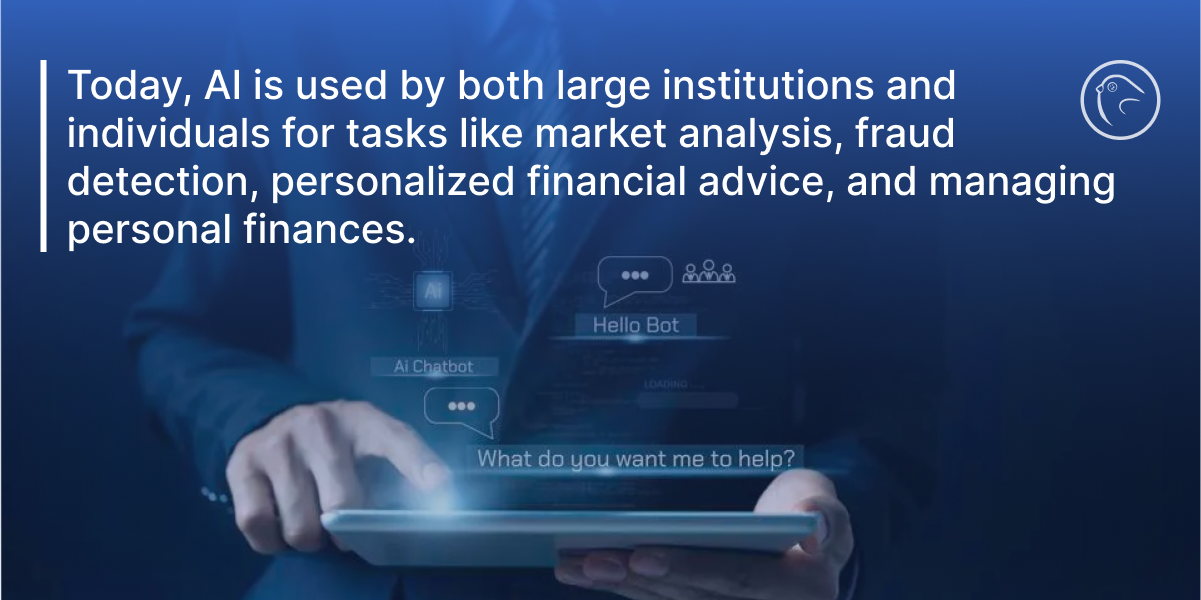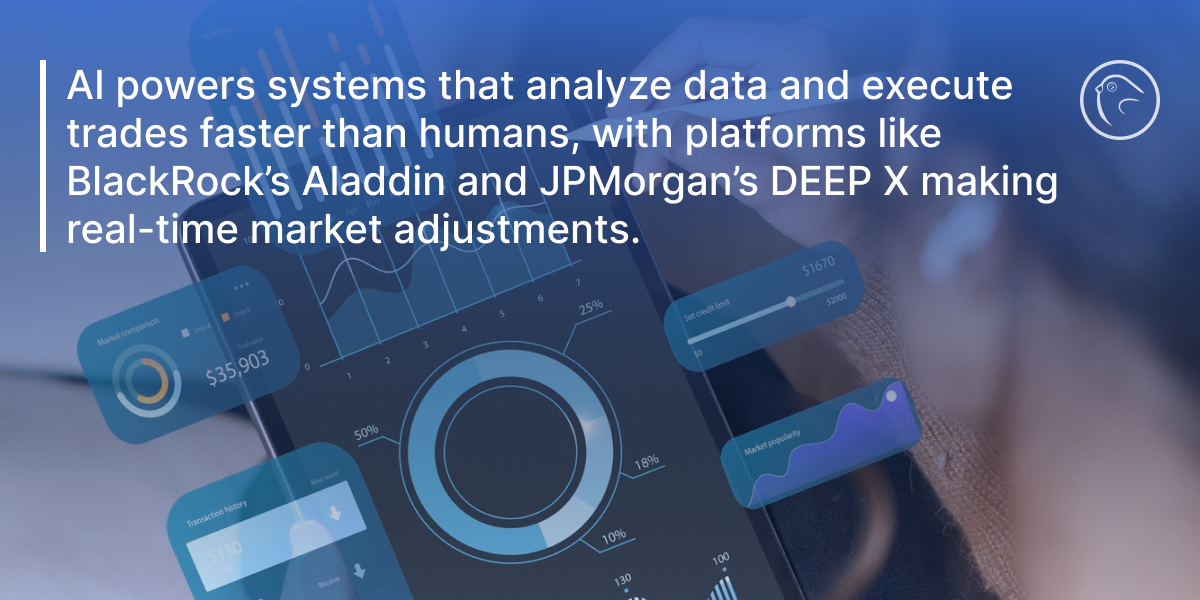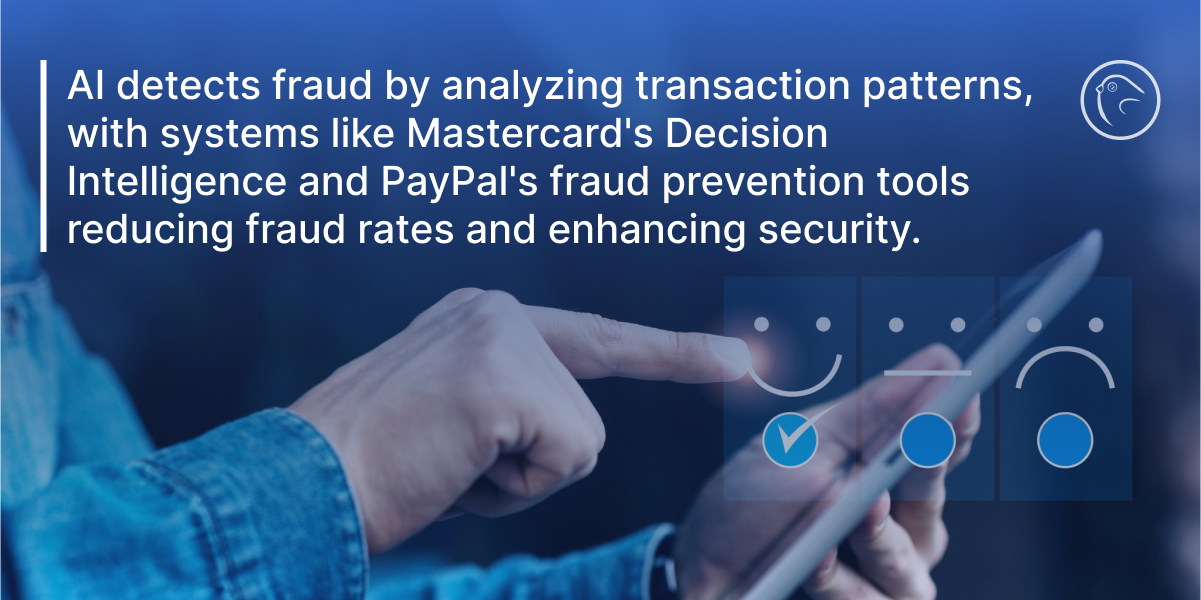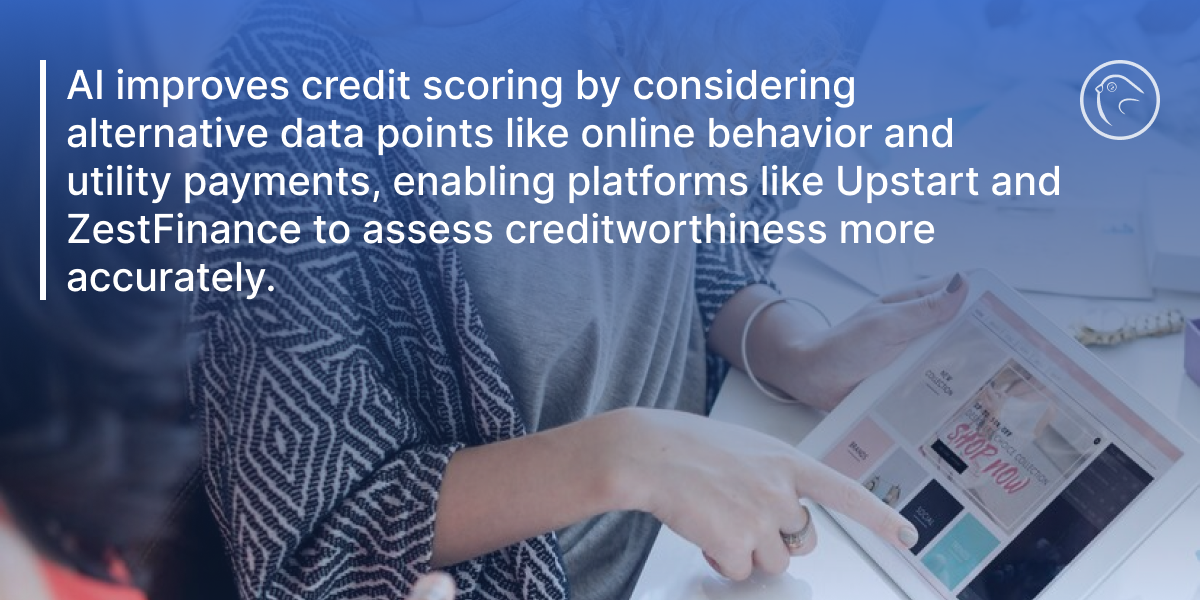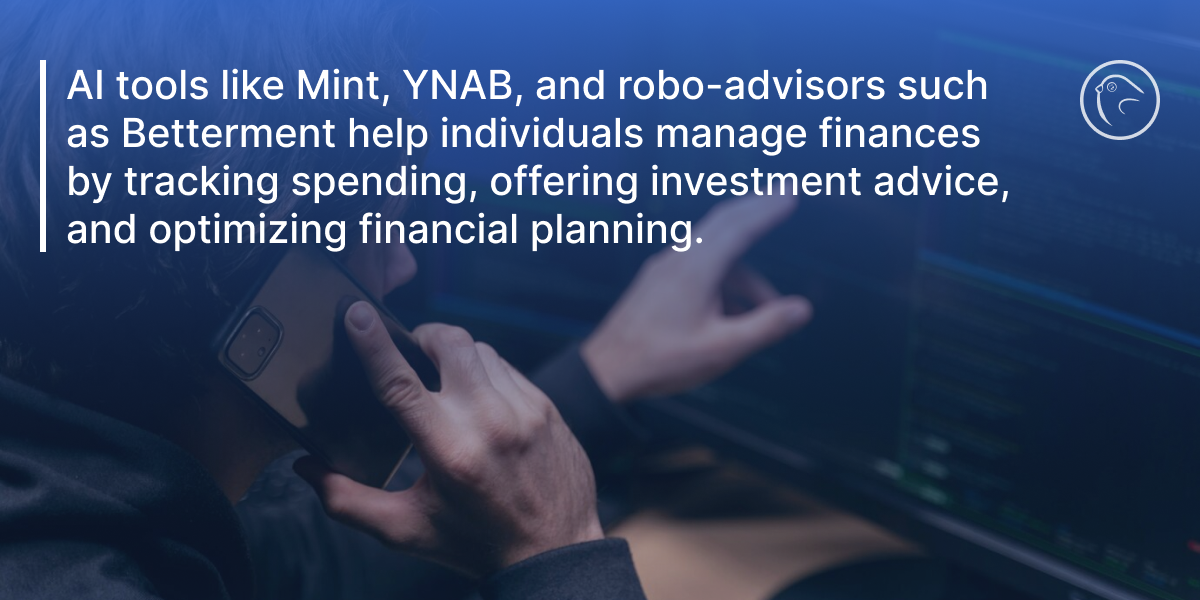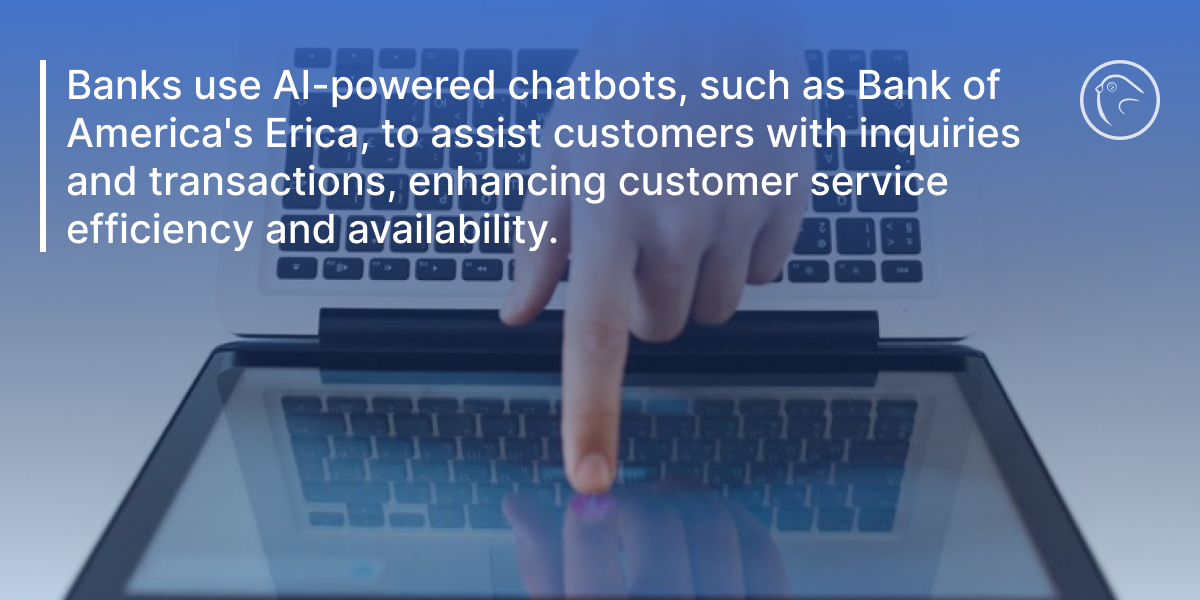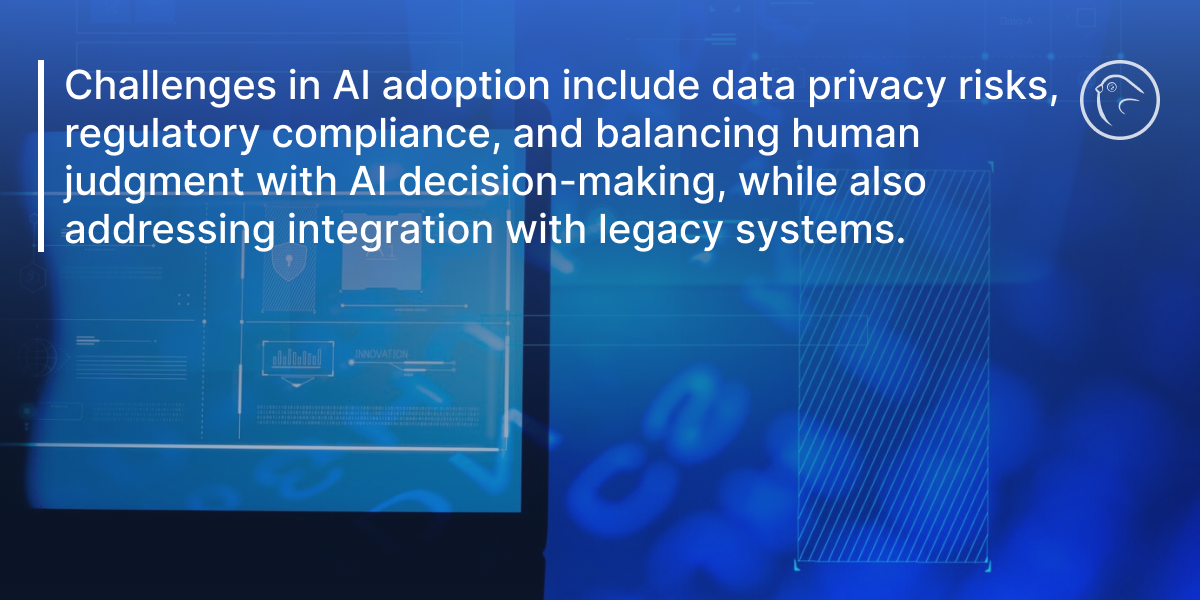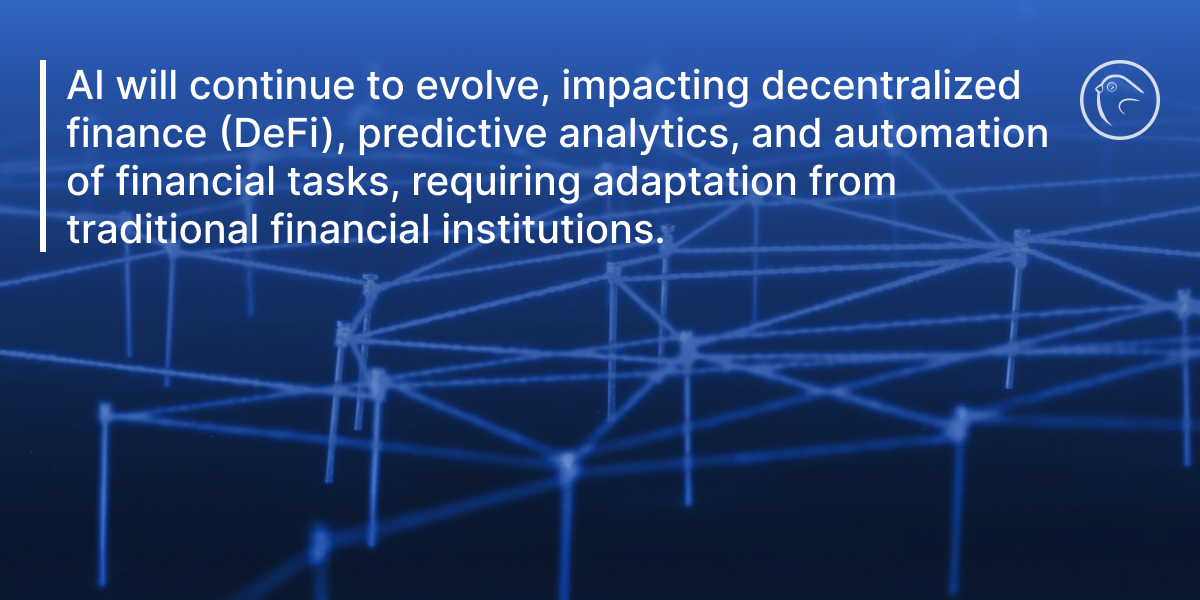AI has firmly entered our everyday lives, even if we may not notice it. Banking apps sort out our purchases, and we receive alerts about unusual activity with our banking cards. It’s all AI. It simplifies and safeguards our finances. Over the past decade, it has become an essential part of global financial services. First, it was mainly used for basic data processing by major institutions, but it quickly evolved into wise tools that detect fraud in seconds, predict market trends, and offer personalized financial advice. AI powers contactless payments we use every day and even helps the spam filters protect our banking emails.
AI transforms all traditional financial systems and changes the way we manage money. It makes financial services more accessible, secure, and personalized. It makes our interactions with money fast, simple and precise.
What is Artificial Intelligence in Finance?
Artificial intelligence (AI) in finance refers to the application of advanced computational technologies, such as machine learning and natural language processing, to automate, streamline, and enhance various financial processes. By leveraging AI, financial institutions can analyze vast amounts of financial data to identify patterns, make predictions, and derive actionable insights. This enables them to make more informed decisions, manage risk more effectively, and improve overall service delivery.
For instance, machine learning algorithms can process historical financial data to predict future market trends, while natural language processing can analyze customer interactions to provide personalized financial advice. AI in finance is not just about automation; it’s about enhancing human intelligence with data-driven insights, making financial operations more efficient and secure.
The First Steps of AI in Finances
The journey of AI in the financial sector started in the late 1980s on Wall Street. They used automated trading programs that were designed to spot market patterns. In 1987, SEB AB, the largest bank in Sweden, launched AIDA (Artificial Intelligence Dealing Assistant), one of the first successful algorithmic trading systems. It was quite primitive; however, it laid the foundation for modern machine-based trading. Read more in our previous article: The Role of AI in Healthcare: From Diagnosis to Patient Care In the 1990s, AI was first used for fraud detection. In 1991, American Express created a large-scale fraud detection system driven by AI. Around the same time, IBM’s Deep Blue defeated the chess champion and inspired traders to explore similar AI strategies in financial markets.
By the early 2000s, AI was used in credit scoring. Capital One used machine learning to analyze thousands of data points for credit card approvals. This approach appeared to be much more effective than traditional FICO scores. The 2008 financial crisis further urged AI adoption as firms were looking for advanced tools for risk management. In 2017, JPMorgan created COIN. This software could review loan agreements in seconds – a process that previously required 360,000 hours of legal work annually. AI has reshaped finance, making it faster, smarter, and more efficient than ever before.
Benefits of AI in Financial Institutions
The adoption of AI in financial institutions brings a multitude of benefits, transforming how these entities operate and interact with their customers. One of the primary advantages is the enhancement of customer interactions. AI-powered chatbots and virtual assistants can provide 24/7 support, answering queries and assisting with transactions, thereby improving customer satisfaction and loyalty.
AI also plays a crucial role in risk management. By analyzing large datasets, AI systems can identify potential risks and opportunities, enabling financial institutions to develop more effective investment strategies. For example, AI can detect unusual transaction patterns that may indicate fraud, allowing institutions to take preventive measures and reduce financial losses.
Moreover, AI increases operational efficiency by automating routine tasks and processes. This not only reduces costs but also frees up human resources to focus on more strategic activities. Overall, AI helps financial institutions to deliver more personalized services, manage risk better, and operate more efficiently.
Modern Uses of AI in Finances
Today, AI is not used only by big financial institutions but is transforming the entire financial sector. Everyday we actively use budgeting apps that track our spendings or AI-advisors that help us invest wisely. AI quickly learns and adapts and penetrates more and more financial services. Here is how:
Algorithmic Trading and Market Analysis
AI powers algorithmic systems that can analyze markets and execute trades faster than people, revolutionizing the finance industry. These systems use machine learning to work with tons of data that range from historical market trends to latest news. They successfully spot the best opportunities for deals. AI can successfully predict market movements and assess investor emotions based on social media trends.
BlackRock, the world’s largest asset manager, offers a great example of AI in trading. Its Aladdin (Asset, Liability, Debt, and Derivative Investment Network) platform processes over 200 million calculations across roughly 25,000 portfolios every week. The platform can analyze any detail, be it a market trend or news sentiment.
JPMorgan’s DEEP X trading platform demonstrates how AI adapts to market conditions in real-time. The system studies market volatility, liquidity, and other factors, automatically adjusts trading strategies and executes trades at optimal prices.
Renaissance Technologies’ Medallion Fund is another famous example of AI use in trading. It has achieved average annual returns of 66% before fees from 1988 to 2018. Their AI algorithms can analyze all existing timeframe patterns, from microseconds to months, and take into account thousands of variables that human traders may miss.
Fraud Detection and Security
Fraud detection is one of the most practical and popular AI roles in the financial sector. Millions of transactions are happening every second, and it is impossible to manually spot every case of fraud. At the same time, AI can instantly notice unusual patterns in spending or account activity. For example, when your bank sees a suspicious transaction and sends you an alert, it is actually the AI behind it.
Mastercard uses AI-powered Decision Intelligence technology that analyzes over 200 billion transactions per year. It makes instant decisions about whether to approve or decline transactions. This system has reduced false declines by 50% and increases fraud detection rates by 40%.
PayPal also uses a strong AI fraud prevention system that checks payments for over $700 billion per year. It goes through thousands of data details when a transaction is made. It checks device, location data, and user behavior. The system is so effective that PayPal’s fraud rate is only 0.32% which is considered to be very low in the industry.
Capital One’s AI security system could successfully stop a breach attempt in 2019. The system detected unusual access requests and enabled the bank to quickly react to it. Today, their AI monitors over 150 billion transactions per year.
Credit Scoring and Predictive Analytics in Risk Assessment
AI simplified credit scoring and risk assessment procedures for the finance industry. Traditionally, financial institutions manually calculated credit scores and relied only on payment history and income. AI expands this data range – it also analyzes utility payments, online purchases, and even social media behavior.
Upstart lending platform is a great example of how AI performs credit assessment. Its AI system studies over 1,600 alternative data when it receives a request. It takes into account the client’s education, employment history, and even how they interact with the application form. Upstart says this approach allows them to avoid mistakes in approval rate compared to traditional models.
ZestFinance consumer lending service helped Baidu expand credit access in China. Their machine learning models analyze thousands of potential variables to assess the financial reliability of potential customers. It allowed the company to attract millions of customers who would be declined by traditional credit scoring methods.
Personal Finance Management and Robo-Advisors
AI shows great results not only for businesses but also for personal finance management within the financial sector. We can effectively use it for managing personal finances. AI simplifies a lot of operations for millions of ordinary users.
There are many financial applications for everyday use. Mint and You Need a Budget (YNAB) use AI to track and arrange your purchases, and even help users optimize their expenses. For example, Mint can analyze all your spendings and suggest cheaper alternatives. Read more in our previous article: How AI is Revolutionizing E-commerce Personalization If you are a private investor, you may need a robo-advisor. For example, Betterment and Wealthfront have transformed investing. These AI-powered platforms use AI to analyze your goals, risk tolerance, and timeline and offer personalized investment strategies. For example, someone saving for retirement can use a robo-advisor to set up a low-risk portfolio that grows steadily over time.
Some tools can even predict your spending habits and help you avoid surprises. AI makes financial planning accessible to ordinary people, even if they have no experience in managing money.
Customer Service and Chatbots
AI-powered chatbots let banks and financial services in the finance industry interact with customers without a stop. These virtual assistants are available 24/7 to answer questions, assist with transactions, and guide users through processes.
Bank of America has a virtual assistant Erica. It has become the most successful financial chatbot in the world. Over 24.5 million clients use it regularly, and it has already processed over a billion client requests. Erica can understand complex queries about transactions and offer relevant help.
Singapore’s DBS Bank uses chatbots for 82% of all customer inquiries. During the COVID-19 pandemic, they successfully coped with a 170% increase in customer inquiries and still could respond in less than 30 seconds.
Another example of banking chatbot is HSBC’s Amy. It is trained to provide helpful, conversational responses to customers. Over time, these bots learn and can offer more accurate and personalized assistance. Some of them can even recommend what savings accounts or investment plans to choose.
AI Adoption in the Financial Services Industry
The financial services industry is witnessing a rapid adoption of AI technologies, with many financial institutions investing heavily in AI research and development. According to a recent survey, 80% of financial institutions plan to increase their AI investments in the next two years. This surge in AI adoption is driven by the need to improve efficiency, reduce operational costs, and enhance the overall customer experience.
AI is being utilized in various areas of finance, including investment research, risk management, and customer service. For instance, AI algorithms can analyze market data to provide insights for investment strategies, while AI-powered systems can assess credit risk more accurately than traditional methods. In customer service, AI chatbots and virtual assistants are revolutionizing how financial institutions interact with their clients, providing instant support and personalized recommendations.
AI in Finances – Challenges and Considerations
The biggest concern of using AI in the financial sector is data privacy and security. AI systems need access to a lot of personal and financial data. It seriously raises the risk of breaches or misuse. Companies must protect strict mechanisms to protect this information – strong encryption, careful data handling, and adherence to privacy laws like GDPR or CCPA. Without these measures, trust in AI systems can quickly evaporate.
Regulatory compliance is another hurdle. Many AI systems operate like a black box, and it is often hard to explain their decisions. This can be a problem when regulators ask to clarify why certain loans are approved or denied. Financial institutions must work to ensure their AI systems are not only efficient but also fair and transparent.
Then there’s the challenge of human vs. AI decision-making. While AI is great at processing large amounts of data, it can miss the human context behind certain decisions. A blend of human judgment and AI efficiency is often the best approach to ensure fair outcomes.
Lastly, integration with legacy systems can be tough. Many banks and financial institutions still use older systems, and AI upgrades require time, money, and training for employees.
Regulatory Considerations
The use of AI in finance raises several regulatory considerations that financial institutions must address to ensure compliance and maintain trust. Data privacy and security are paramount, as AI systems require access to vast amounts of personal and financial data. Financial institutions must implement robust encryption and data handling practices to protect this information and comply with regulations such as the General Data Protection Regulation (GDPR) and the Financial Industry Regulatory Authority (FINRA) rules.
Transparency and explainability are also critical. Many AI systems operate as “black boxes,” making it difficult to understand how decisions are made. Financial institutions must ensure that their AI systems are transparent and can provide explanations for their decisions, especially when regulators require clarification on loan approvals or denials.
Additionally, addressing potential biases in AI systems is essential to prevent discrimination against certain groups of customers. Financial institutions must regularly audit their AI models to ensure fairness and mitigate any unintended biases. By addressing these regulatory considerations, financial institutions can harness the power of AI while maintaining compliance and building trust with their customers.
Future Perspectives of AI in Finances
One key trend is the growth of decentralized finance (DeFi), where AI works with blockchain to make transactions faster and smarter, revolutionizing the finance industry. Predictive analytics is becoming stronger and more precise – it will enable financial institutions to spot market trends and risks earlier. Voice-activated assistants and chatbots that use advanced natural language processing (NLP) will keep making financial services easier to use for everyone.
Looking ahead, AI may be used for fully automated financial systems that will do everything from investments to budgeting without human input. Fraud detection will get even better as AI learns to identify new scams. AI could also change how loans are given by analyzing alternative data, like online behavior, to assess creditworthiness. This could make it easier for people without a traditional credit history to access financial services.
For traditional financial institutions, these changes bring both opportunities and challenges. Banks that implement AI will offer faster, more personalized services. However, those that don’t adapt may struggle to retain their customers and attract new ones. Many traditional banks will need to work with tech companies and update their systems to stay relevant.
Wrapping Up
AI is no longer something a financial sector institution may like or not. It has become a must-have technology for the financial world. And its role steps far beyond automation. AI transforms how financial services work. It spots fraud in seconds and offers personalized advice for your particular needs. AI reshapes the way we interact with money.
As AI continues to develop, we all need to be ready for what’s ahead. Banks and companies must embrace these changes. At the same time, they must find serious solutions to challenges like data privacy and ethical concerns. And everyday users must take time to understand how AI can help manage money or make better financial decisions.
The future of finance is undeniably tied to AI. We must learn to use this technology wisely, we can create services that are fast, secure, and available to more people than ever before. It’s an exciting journey that just began!

